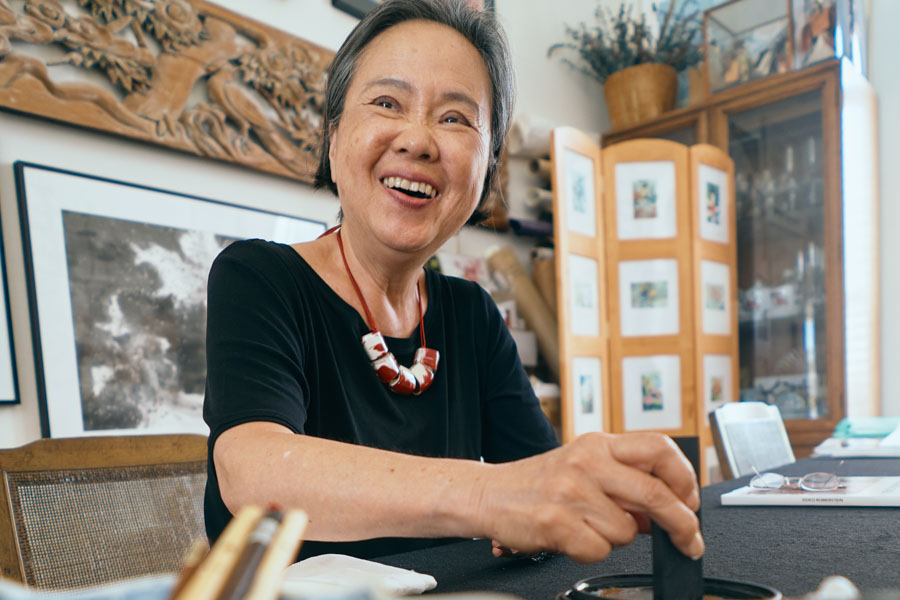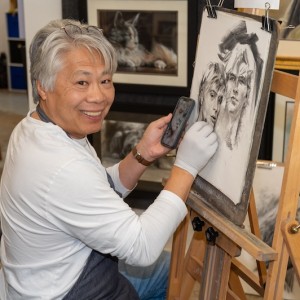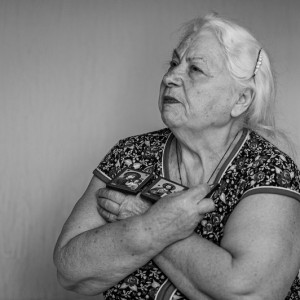A discipline based in nature and tradition, the tools have endured for millennia unchanged, as has the draw. And though the rules may be rigid, practitioners find freedom in the spaces between. With the National Sumi-e Society holding its annual show at ArtCenter Manatee this month, SRQ took a moment with past president Linda Beaudoin, who still leads Sumi-e lessons out of her home. The process begins with the grinding of the ink, which sets the tone for everything that follows. Just as the monks of old, Beaudoin settles down with her ink stone and ink stick, grinding charcoal and binder into a fresh pool of black for the day’s work. The task can take eight to 10 minutes of steady grinding, but creates a visceral connection between artist and medium. “The whole process is meant to give you time to calm down, center yourself and think about what you want to paint,” says Beaudoin. “If done correctly, it actually has a meditative aspect.”
But meditative doesn’t mean thoughtless, and the need for nuance that will permeate the entire Sumi-e experience begins here. Through careful dilution, Sumi-e masters can achieve more than 700 shades of grey by hand, according to Sumi-e lore. “And if ink is handled really well,” says Beaudoin, “it almost gives the illusion of color.”
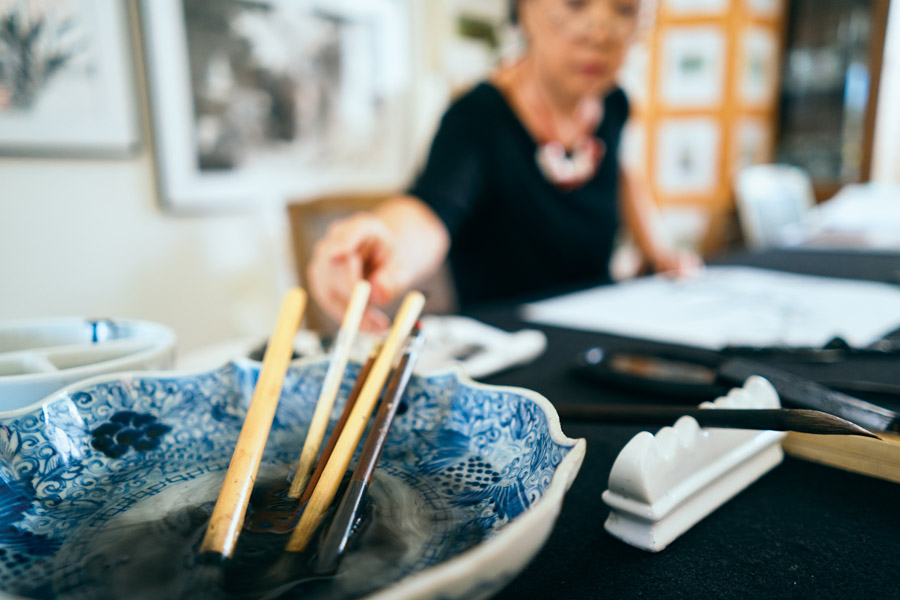
With both mind and body limbered up, the artist can reach for the remaining two of what Sumi-e practitioners call the Four Treasures—the four traditional tools that all Sumi-e artists must use. The ink stone and stick represent two (a clue to the importance of ink-grinding in the art), but even the best ground ink needs the right brush to wield it and paper to soak it up. And even here, rules reign supreme. When it comes to the paper, the conventions are straightforward, says Beaudoin—for portraits and flowers, use the smooth side of the rice paper, but take advantage of the textured side for landscapes. Brushes, however, are a whole other animal. Traditionally made by hand of all-natural materials, the type of brush used changes with the subject being rendered. To paint bamboo, leaves and some landscapes, a stiffer, brown-hair brush made from weasel, wolf, leopard or badger fur should be used, while flowers, birds and calligraphy call for white-hair brushes made from the hair of goats. Mixed-hair brushes offer all sorts of in-between options. All told, artists have more than 20 different brushes to choose from, each with its own particular character.
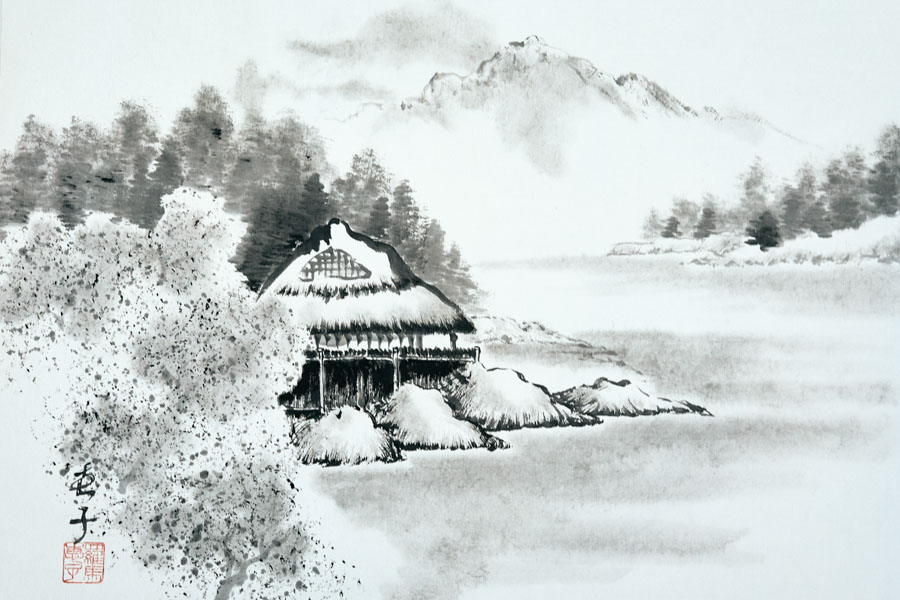
But even as the required tools are finally assembled, Sumi-e demands more of its adherents. Before putting ink to paper, they must learn the proper way to hold the brush. “Put your first two fingers in front of the handle of the brush, and your second two fingers behind the brush,” says Beaudoin, “so that you get an equal push and pull, regardless of the size of the brush you’re using.” This promotes fluidity of movement, which translates to the delicate, flowing motions and marks that give Sumi-e its trademark. And once students know how to hold a brush, they can learn to load it properly with their freshly ground ink.
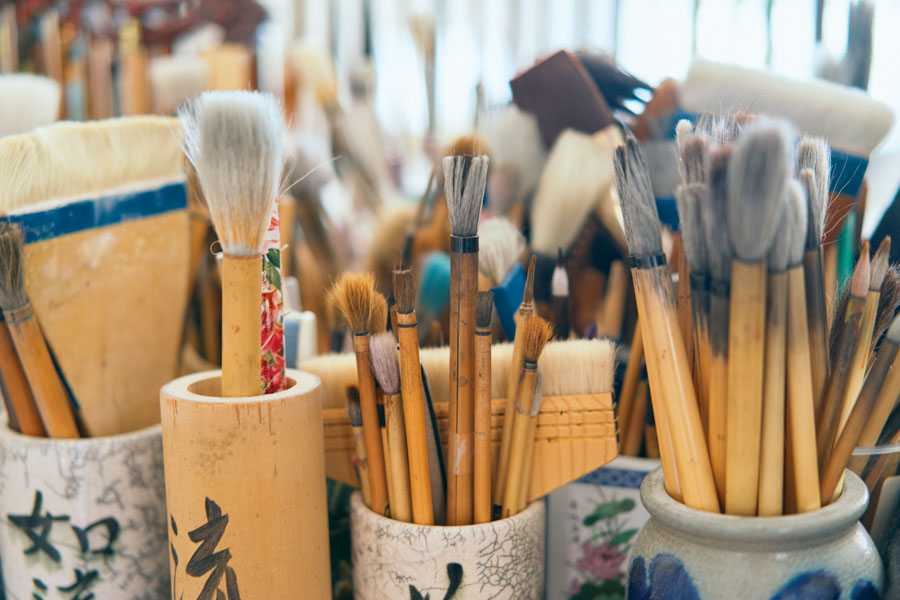
With the Four Treasure firmly in hand (or perhaps not), it’s a trip to the Four Gentlemen—the first four types of paintings that all Sumi-e artists learn to do: bamboo, orchid, plum blossom and chrysanthemum. “Within those four subjects,” says Beaudoin, “are pretty much all the brush strokes that we would need to use.” And she knows teachers who make their students paint nothing but bamboo for the first year. Eventually, the dedicated may progress to the highest form of Sumi-e—calligraphy, where painting meets poetry—but it’s a long road. Many won’t make it, but that’s part of Sumi-e too.“It’s not always about the result,” says Beaudoin. “As time goes on, you learn to appreciate the process.”





